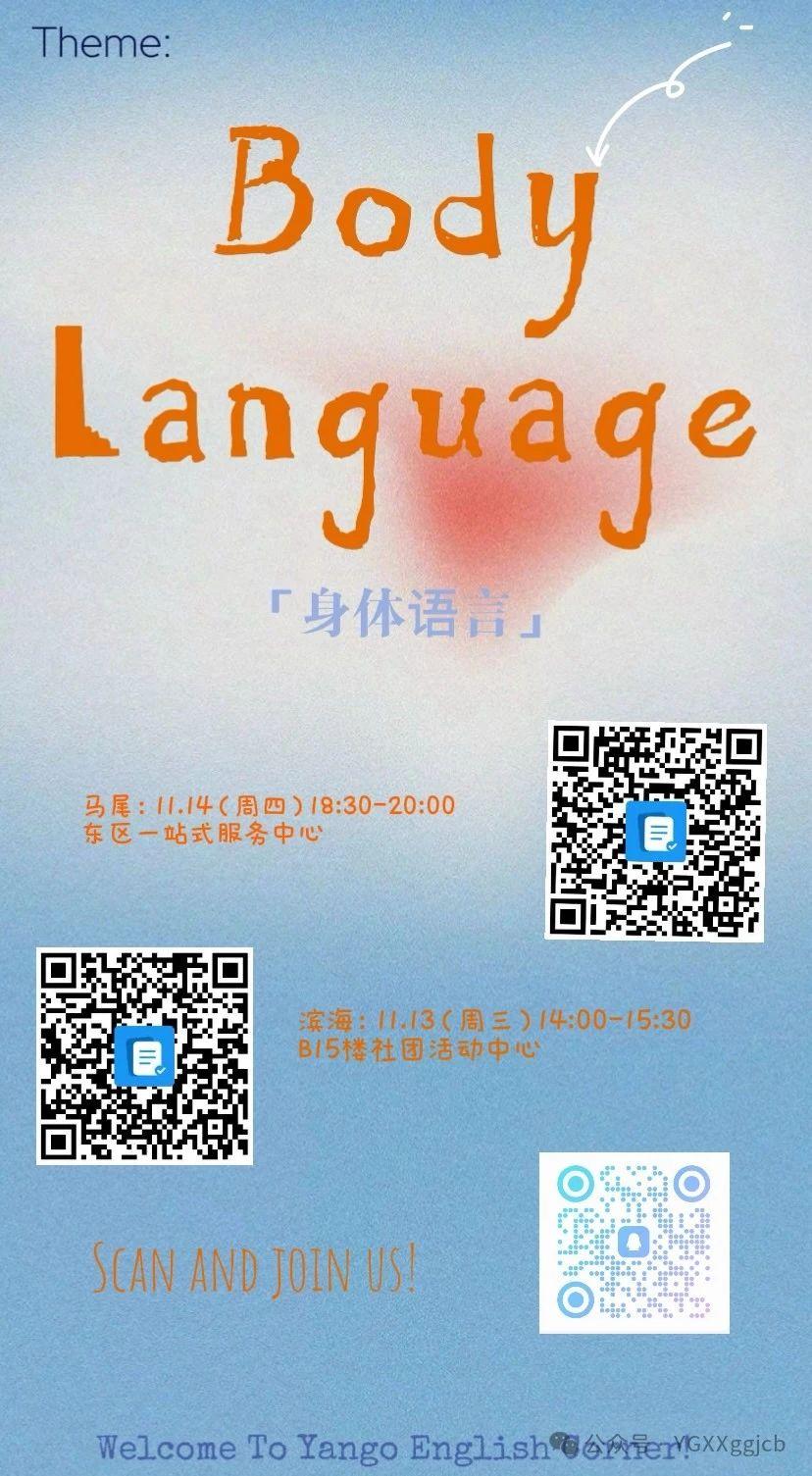
肢体语言,是指经由身体的各种动作,从而代替语言藉以达到表情达意的沟通目的。广义言之,肢体语言也包括前述之面部表情在内;狭义言之,肢体语言只包括身体与四肢所表达的意义。
Body language, refers to the various movements of the body, so as to replace language in order to achieve the purpose of expressive communication. Broadly speaking, body language also includes the aforementioned facial expressions; In a narrow sense, body language only includes the meaning expressed by the body and limbs.
谈到由肢体表达情绪时,我们自然会想到很多惯用动作的含义。诸如鼓掌表示兴奋,顿足代表生气,搓手表示焦虑,垂头代表沮丧,摊手表示无奈,捶胸代表痛苦。当事人以此等肢体活动表达情绪,别人也可由之辨识出当事人用其肢体所表达的心境。
When it comes to the physical expression of emotions, we naturally think about the meaning of many conventional actions. Things like clapping your hands for excitement, stamping your feet for anger, rubbing your hands together for anxiety, dropping your head and spreading your hands for frustration, and beating your chest for pain. The parties express their emotions through such physical activities, and others can also identify the state of mind expressed by the parties with their limbs.
由肢体动作表达情绪时,当事人经常并不自知。当我们与人谈话时,时而蹙额,时而摇头,时而摆动手势,时而两腿交叉,我们多半并不自知。正因如此,心理学家提出一个如下的假设:当你与人说真话的时候,你的身体将与对方接近;当你与人说假话的时候,你的身体将离开对方较远。此一假设验证的结果发现:如果要求不同受试者,分别与别人陈述明知是编造的假话与正确的事实时,说假话的受试者会不自觉地与对方保持较远的距离,而且显得身体向后靠,肢体的活动较少,惟面部笑容反而增多。因为肢体语言通常是一个人下意识的举动,所以,它很少具有欺骗性。
When emotions are expressed by body movements, the person is often unaware of it. We frown, shake our heads, wiggle our hands, cross our legs when we are talking to someone, and most of us don't realize it. For this reason, psychologists have proposed the following hypothesis: When you tell the truth to someone, your body will be close to the other person; When you lie to someone, your body will be farther away from the other person. The results of this hypothesis test found that if different subjects were asked to tell others a false story that they knew to be fabricated and a correct truth, the subjects who told the false story unconsciously kept a longer distance from the other person, and appeared to lean back with less body movement, but facial smile increased. Because body language is usually a person's subconscious actions, it is rarely deceptive.
不同国家的身体动作有不同的意思
1.盯着别人的眼睛看,在一些国家是表示对对方感兴趣,但在另一些国家,是被认为无理的,对别人不尊重.
2.美国做OK的手势,在美国表同意,在日本人眼中,这个手势表示钱,在法国,这个手势被认为是数字 0,在巴西和德国,这个手势很粗鲁.
3.美国的手势——竖起大拇指,在美国表示很好、干得不错,但是在尼日利亚,这个手势很粗鲁,而在日本和德国,它意味着第一.
4.在很多国家,点头是肯定,摇头是否定,但是在保加利亚,希腊的某些地区和伊朗,却是点头否定,摇头肯定。
Body language has different meanings in different countries
1. Staring into someone's eyes is a sign of interest in some countries, but in others it is considered rude and disrespectful.
2. In the United States, the OK sign is approved, in the Japanese, it means money, in France, it is considered a zero, and in Brazil and Germany, it is rude.
3. The American thumbs-up sign. In the United States it means very well done. But in Nigeria, it's rude. But in Japan and Germany, it means number one.
4. In many countries, nodding your head means yes and shaking your head means no, but in Bulgaria, parts of Greece, and Iran, it means nodding your head no and shaking your head yes.
“body language”还蕴藏很多大学问哟,感兴趣的同学们快快来报名参加英语角的活动吧!
本期撰稿|林延 黄奕忱
本期编辑|李嘉豪 罗睿
本期统筹|安列妮(师)
本期指导|张淑钰(师)刘晓芳(师)
本期责编|郭小芳(师)
本期审核|魏懿颖(师)